The Power Behind Fiber Laser Conversion Technology
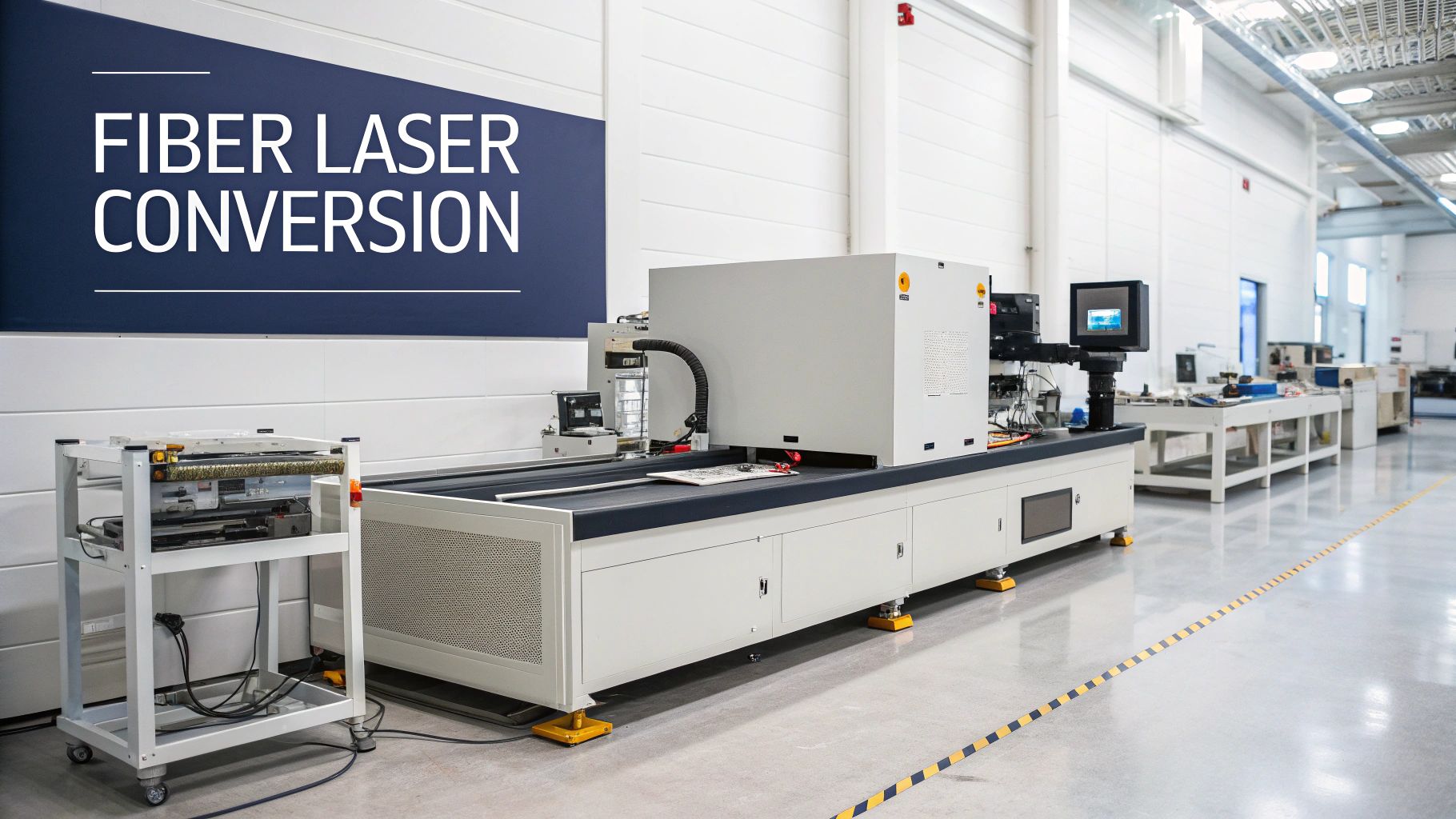
Fiber laser conversion offers manufacturers a way to achieve greater precision, efficiency, and cost savings. This technology transforms electrical energy into intensely focused laser beams, capable of cutting and engraving diverse materials with a level of refinement unmatched by previous methods. But what makes fiber laser conversion so effective?
The Physics of Fiber Lasers
The key lies in the unique components and the light amplification process they facilitate. Unlike traditional CO2 lasers or solid-state lasers, fiber lasers use a specialized optical fiber doped with rare-earth elements. This fiber guides and amplifies the laser light within its core.
The amplification starts when light from a pump source, usually a diode laser, enters the doped fiber. The pump light energizes the atoms in the fiber, prompting them to emit photons. These photons then trigger more emissions, creating a cascading effect that amplifies the light. This process continues as the light travels through the fiber, ultimately generating a powerful and coherent beam. Because the beam is confined within the fiber, it has excellent beam quality, meaning a tiny spot size and minimal divergence. This precise beam allows for intricate cuts and engravings with very small heat-affected zones.
Advantages Over Traditional Systems
Fiber lasers also offer remarkable electrical-to-optical conversion efficiency. This translates to a higher percentage of the input electrical power being converted into usable laser light, minimizing energy waste and lowering operating costs. This presents a substantial advantage over traditional laser systems, which often struggle with lower conversion rates. Furthermore, the compact nature of fiber lasers enables manufacturers to make the most of their production floor space.
Market Growth and Impact
The global fiber laser market, encompassing fiber laser conversion technologies, is on a significant growth trajectory. Projections estimate it will reach $8.53 billion by 2031. This growth is driven by a 12.0% CAGR from 2024 to 2031, a notable increase from its $3.50 billion value in 2023. The Asia Pacific region, spearheaded by countries like China, Japan, South Korea, and India, is at the forefront of this expansion. This region contributed 44% of the market revenue in 2023. Learn more about the fiber laser market. This increasing market share underscores the transformative potential of fiber laser conversion across diverse industries, paving the way for greater precision and efficiency in manufacturing.
Real-World Benefits That Transform Production Lines
Switching to fiber lasers isn't just a theoretical upgrade; it brings real, tangible advantages that reshape how production lines operate. Companies adopting this technology are seeing major improvements, from higher precision and lower energy bills to reduced maintenance and a longer lifespan for their equipment.
Enhanced Precision and Streamlined Post-Processing
Fiber lasers' superior beam quality directly leads to increased precision. This means cleaner cuts and burr-free edges, which greatly reduces the need for post-processing work. This saves valuable time and labor, while also boosting the overall quality of the finished product. Intricate cuts and engravings are now achievable with minimal heat-affected zones, protecting the surrounding material.
Significant Energy Savings and Sustainability
One of the most attractive benefits of fiber laser conversion is the dramatic reduction in energy use. Compared to traditional CO2 lasers, fiber laser systems can cut energy consumption by up to 70%. This substantial saving lowers operating costs and shrinks a company's carbon footprint, supporting sustainability goals. This also reduces the strain on a facility's power grid, freeing up capacity for other essential operations.
Reduced Maintenance and Longer Service Life
Fiber lasers require significantly less maintenance than traditional lasers. This translates to a shift from weekly maintenance with CO2 lasers to quarterly check-ups with fiber lasers. Less frequent maintenance means less downtime, increased productivity, and lower maintenance costs. Plus, fiber lasers have a service life roughly 3x longer than older systems, adding to the long-term cost savings.
To better understand the key differences, let's examine a comparison of fiber lasers with traditional laser systems:
Fiber Laser vs. Traditional Laser Systems Comparison of key performance metrics and operational benefits between fiber laser systems and traditional CO2/Nd:YAG lasers
| Performance Metric | Fiber Laser | CO2 Laser | Nd:YAG Laser |
|---|---|---|---|
| Energy Efficiency | Very High (up to 70% less energy) | Low | Moderate |
| Precision | Very High | Moderate | Moderate |
| Maintenance | Low (Quarterly) | High (Weekly) | Moderate |
| Lifespan | Long (3x longer) | Short | Moderate |
| Operating Cost | Low | High | Moderate |
This table highlights the advantages of fiber lasers in terms of efficiency, precision, maintenance, and overall cost-effectiveness. The lower operating costs and extended lifespan contribute significantly to a faster return on investment.
Optimized Production Floor Space and Workflow
The compact design of fiber laser systems helps manufacturers make the most of their production floor space. This smaller footprint offers flexibility in production line layout, fitting into tighter areas and enabling more efficient workflows. The space saved can then be used for expanding production or adding other equipment. You might be interested in: How to master....
Measurable ROI Across Various Industries
These combined benefits lead to a measurable return on investment (ROI) for companies in various sectors. From automotive and aerospace to electronics manufacturing, businesses are utilizing fiber laser technology to boost productivity, enhance product quality, and lower operating expenses. These are not just theoretical advantages; they are real results seen by companies who have already adopted this technology. The improved efficiency and cost-effectiveness help companies become more competitive and profitable in today's demanding markets.
Industry-Specific Applications Driving Massive Adoption
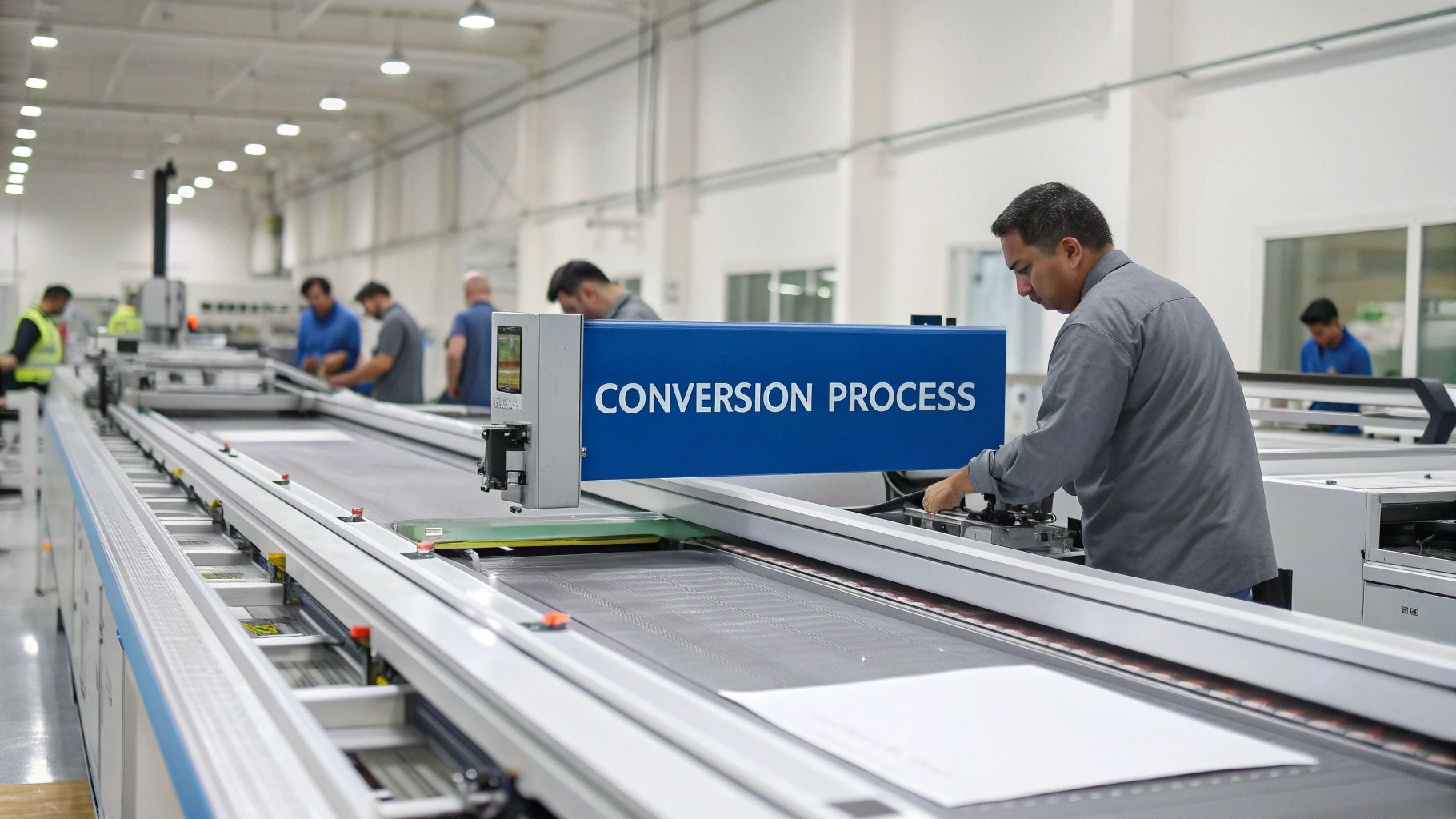
Fiber laser conversion is revolutionizing diverse industries. Its unique capabilities are solving production challenges, delivering impressive results in sectors from automotive and aerospace to electronics manufacturing and more. The widespread adoption is due to the technology's highly precise, efficient, and cost-effective solutions.
Automotive: Precision Cutting and Material Savings
The automotive industry requires both high precision and efficiency. Fiber lasers deliver on both fronts. They enable the cutting of complex parts with micron-level precision.
This precision improves part quality and leads to significant material savings. Some manufacturers report a 40% reduction in material waste. This efficiency directly impacts profitability, especially in high-volume production.
Aerospace: Stringent Weld Quality and Faster Production
The aerospace industry has rigorous weld quality and reliability standards. Fiber laser welding helps companies meet these standards while boosting production speed.
The focused beams create strong welds that pass demanding stress tests. They also reduce production time, sometimes cutting it in half. This faster cycle means quicker turnaround times and lower costs.
Electronics: Delicate Marking Without Thermal Damage
The electronics industry handles sensitive components regularly. Fiber laser marking offers the finesse to mark these delicate components without heat damage.
This non-contact process safeguards electronic circuits, minimizing defects. The precision of fiber lasers allows for intricate, permanent marking, perfect for serialization, identification, and branding.
Military Applications: High Power and Precision Weapon Systems
Beyond industrial uses, fiber lasers are gaining traction in military applications. High-power fiber lasers are promising for laser weapon systems.
Research is exploring ways to combine beams from multiple high-power fiber lasers to create even higher outputs. This involves advanced optical setups that precisely align beams, using refractive or reflective optics for accurate beam guidance. While historical data on implemented systems is scarce, the rapid progress in fiber laser technology now offers a viable pathway for military applications requiring extreme power and precision. Learn more about power laser systems here.
Other Sectors Benefitting From Fiber Laser Conversion
Many other sectors are finding uses for fiber laser conversion:
- Medical device manufacturing: Creating precise, biocompatible implants
- Jewelry production: Intricate engraving and cutting of precious metals
- Tool and die making: High-precision fabrication of complex tooling
Fiber laser conversion isn't a universal solution; each implementation needs careful consideration based on the specific challenges and industry requirements. The benefits highlighted here show the wide-ranging impact of this technology. These real-world results show how fiber lasers are not just improving current processes but transforming entire production lines.
Your Blueprint for Successful Fiber Laser Conversion
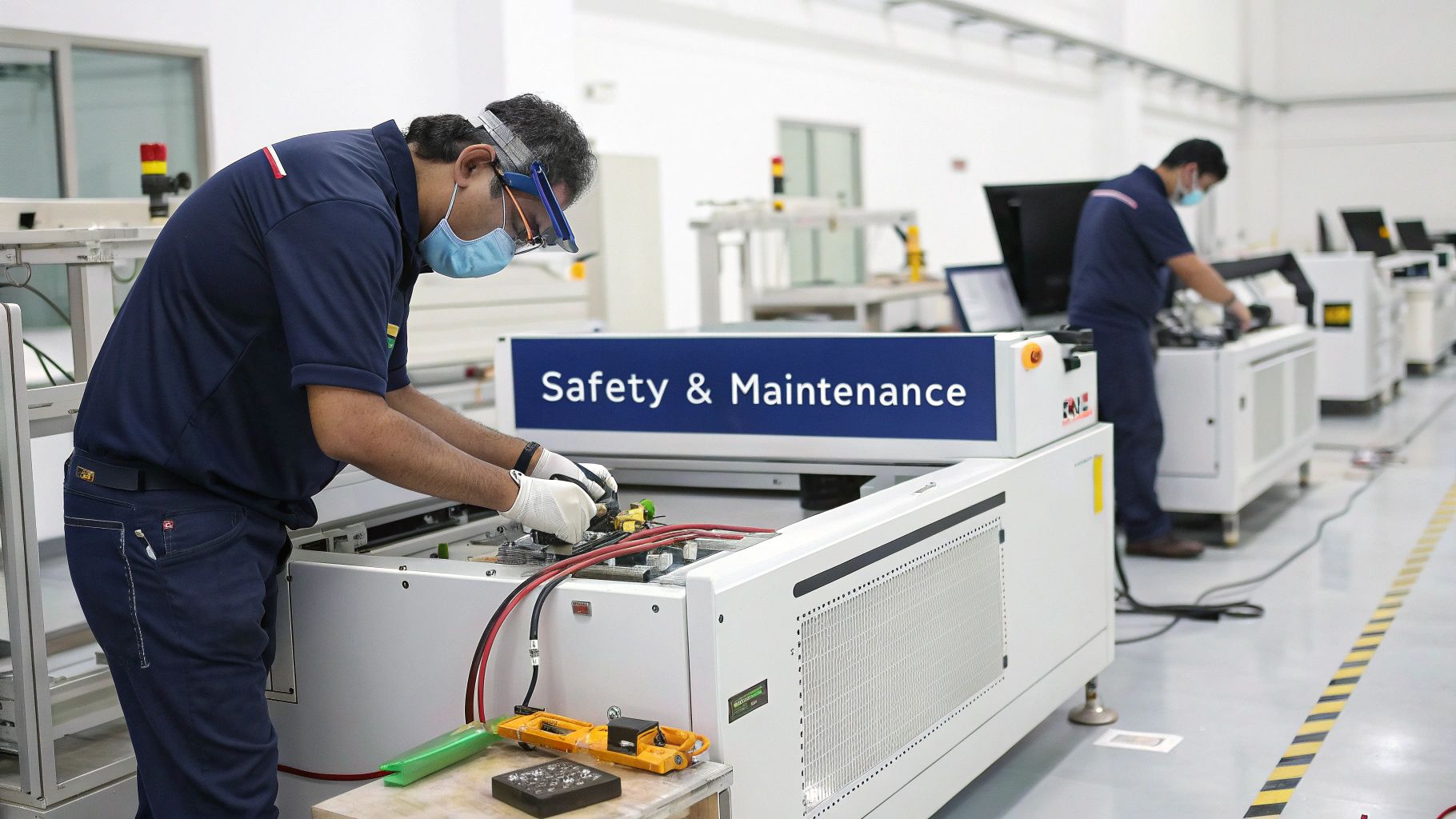
Manufacturing downtime is expensive. When considering a fiber laser conversion, minimizing disruption is key to achieving the best possible outcome. This section presents a proven framework for a smooth and efficient transition, based on insights from numerous successful conversions.
Assessing Your Current Needs and Bottlenecks
A thorough assessment is the first step in any successful fiber laser conversion. This involves identifying current workflow bottlenecks and defining your production needs.
What materials do you typically work with? What are their thicknesses? What level of precision is required for your products? What is your expected production volume? These are all essential questions to consider. This initial assessment becomes the foundation of your conversion strategy, ensuring alignment between the new system and your operations.
Selecting the Right Fiber Laser Specifications
Once your needs are clearly defined, the next critical step is selecting the right fiber laser specifications. This includes choosing the appropriate power level, wavelength, and beam quality to suit your applications.
Under-specifying can limit the system's effectiveness, while over-specifying leads to unnecessary costs. Finding the right balance is crucial. Carefully consider the materials you'll be processing, their thickness ranges, and the level of precision required for each.
Addressing Common Integration Challenges
Integrating a new fiber laser into an existing production line presents unique challenges. These often include power requirements, cooling systems, dust collection modifications, and software integration.
While these can seem daunting, they are manageable. Solutions often come from the expertise of manufacturing engineers who have experience with similar conversions. A proactive approach, addressing these challenges head-on, minimizes potential disruptions during implementation. More insights on laser technology can be found at: Laser Insights.
Realistic Timeline for Implementation
A realistic timeline is essential for a successful fiber laser conversion. This timeline should include every phase, from the initial assessment to the system being fully operational.
The following table outlines a typical implementation roadmap, highlighting key activities, durations, and critical considerations for each phase.
Fiber Laser Conversion Implementation Roadmap Step-by-step process for converting from traditional laser systems to fiber laser technology with estimated timeframes
| Implementation Phase | Key Activities | Typical Duration | Critical Considerations |
|---|---|---|---|
| Assessment and Planning | Analyze current workflow, define requirements, select appropriate laser system | 2-4 weeks | Material types, thickness, required precision, production volume |
| System Acquisition and Installation | Purchase and deliver the fiber laser, prepare the facility, install the system | 4-8 weeks | Power requirements, cooling systems, facility modifications |
| Integration and Testing | Integrate laser into the production line, test and optimize settings, train personnel | 2-4 weeks | Software integration, dust collection, safety protocols |
| Full Operation and Optimization | Commence full production, monitor performance, fine-tune for optimal efficiency | Ongoing | Production efficiency, maintenance schedules, material utilization |
This structured approach allows manufacturers to transition smoothly to fiber laser technology, maximizing its benefits and achieving a faster return on investment. Careful planning minimizes the risk of costly delays and unforeseen issues. A clear timeline also improves communication and coordination among everyone involved, leading to a more efficient implementation and a quicker transition to optimized production.
Breaking Down The True Cost of Fiber Laser Conversion
Investing in fiber laser conversion requires a thorough understanding of the financial implications. This section provides a realistic overview of the costs and potential returns, going beyond general savings claims to explore detailed financial analyses, including initial investments, installation, and potential facility adjustments.
Initial Investment Costs
The initial investment for fiber laser conversion depends on several factors, the most significant being the laser's power level. Higher power lasers naturally come with a higher price tag. Other factors influencing cost include the manufacturer, specific features, and included accessories. For example, a 1kW fiber laser could cost significantly less than a 4kW system. Accurately assessing your power needs is crucial to avoid unnecessary expenses.
Installation and Facility Modifications
Beyond the laser itself, installation costs can add considerably to the overall investment. These costs can include:
- Power and cooling requirements: Even with their efficiency, fiber lasers require robust power and cooling infrastructure.
- Dust collection systems: Effective dust and fume extraction is essential for both operator safety and optimal laser performance. Donaldson offers various solutions for industrial dust collection.
- Facility modifications: You might need to modify your facility to accommodate the new laser system, depending on your current setup.
These costs can fluctuate widely based on individual needs and existing infrastructure. Upgrading electrical systems to handle increased power demands, for instance, can be a significant part of the installation budget.
Real-World ROI and Payback Periods
While the initial investment may seem substantial, real-world examples showcase a compelling return on investment (ROI). Manufacturers are reporting substantial benefits, including:
- 45-70% reductions in electricity consumption: This alone leads to considerable savings over time.
- Maintenance cost reductions exceeding 60%: Fiber lasers' reduced maintenance needs translate to lower labor and parts expenses.
- Production speed increases of 2-3x: Higher throughput directly increases revenue generation.
These combined benefits usually result in payback periods of 12-24 months, although the exact timeframe depends on factors like utilization rates and specific applications. In many cases, this means the initial investment is recouped relatively quickly, after which the fiber laser continues generating savings and boosting profitability.
Financing Options and Tax Incentives
Several financing options are available to help manage the initial investment. These include leasing, loans, and various financing programs offered by equipment manufacturers. Additionally, exploring tax incentives for energy-efficient equipment can further improve the financial viability of fiber laser conversion. Understanding these options and incentives allows businesses to create a financial plan that best suits their needs and maximizes ROI. For instance, certain tax incentives could lower the overall cost of the laser system, shortening the payback period and improving overall financial returns.
Calculating Your ROI
Calculating your specific ROI requires a detailed analysis of your current operating costs, projected savings, and all associated conversion expenses. A comprehensive ROI calculation should consider factors such as:
- Current energy consumption and costs
- Existing maintenance expenses
- Current production rates and potential increases
- Material waste and potential reductions
- Financing costs and tax incentives
This in-depth analysis offers a realistic projection of the financial benefits and helps determine if fiber laser conversion is the right investment for your operation. This should extend beyond simply looking at the laser's purchase price and consider the long-term effects on your business's bottom line.
The Evolution of Fiber Laser Conversion Technology
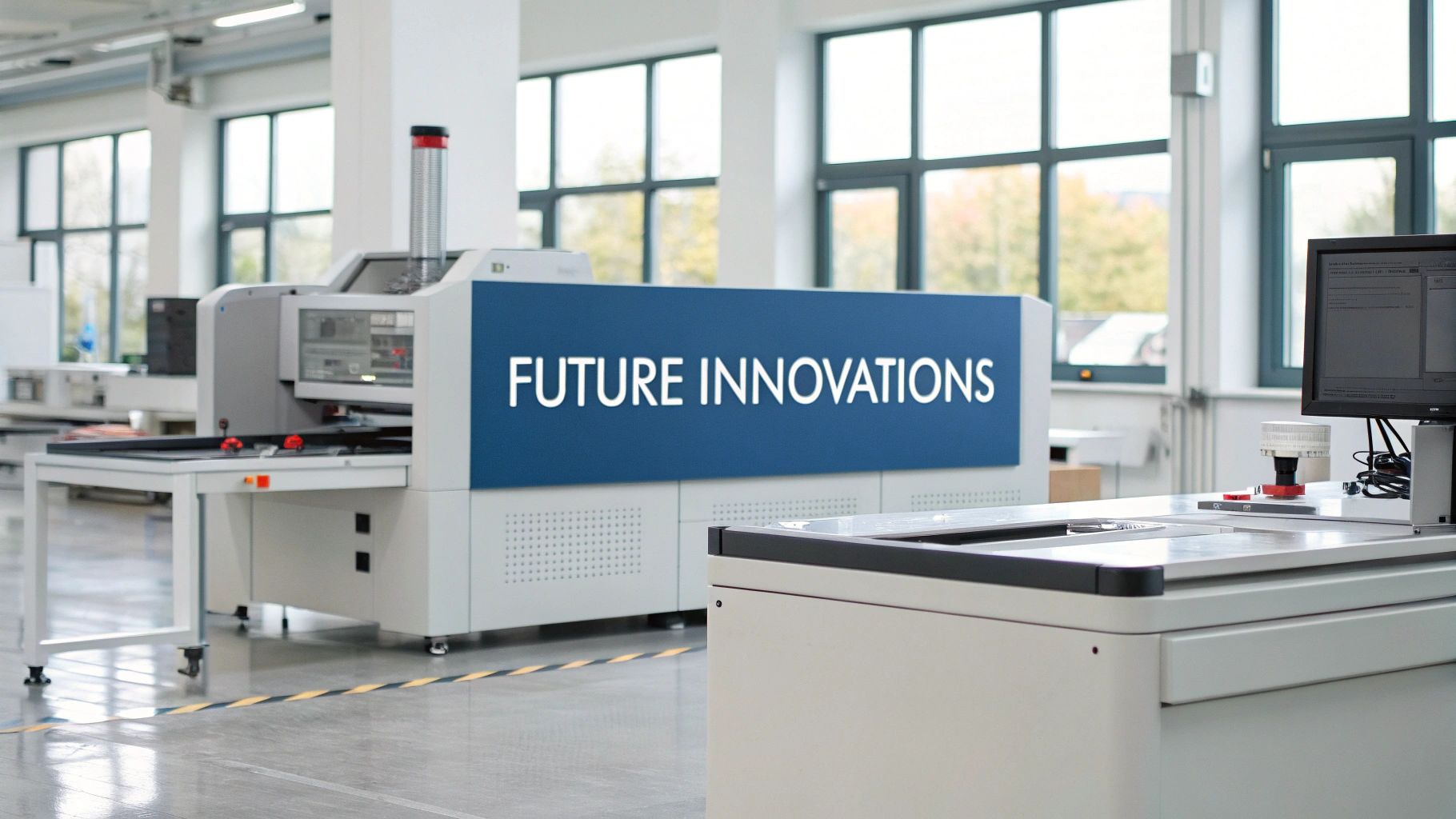
Understanding the current capabilities of fiber lasers is important. But to truly future-proof your business, you need to keep an eye on emerging trends. This section explores advancements set to reshape manufacturing with fiber lasers, drawing insights from industry experts and developers.
Advanced Pulsation Control for Ultra-Thin Materials
New pulsation control technologies are expanding the use of fiber lasers, especially when working with ultra-thin materials. Advanced pulse shaping provides precise control over energy delivery, minimizing heat-affected zones and reducing damage.
This precision unlocks possibilities for processing delicate materials previously unsuitable for laser work. This means industries like electronics and medical device manufacturing can utilize the accuracy of fiber lasers for even their most sensitive components.
Wavelength Advancements for Material Compatibility
Developments in fiber laser wavelengths are expanding the range of materials that can be processed. Certain materials have historically been difficult to work with due to their absorption characteristics. New wavelengths are overcoming these limitations.
For instance, these advancements make fiber lasers suitable for processing copper and some plastics, which were previously challenging. This broadens the use of fiber lasers across various industries. The ability to select wavelengths specifically for a material further enhances precision and efficiency.
AI-Driven Quality Control and Self-Optimizing Production
Integrating AI-driven quality control with fiber lasers is revolutionizing manufacturing. These systems monitor laser processes in real-time, analyzing parameters like beam quality, power stability, and material interaction.
The AI automatically adjusts laser settings to optimize performance and maintain quality. This leads to less waste, increased throughput, and higher automation, ultimately lowering production costs. The system continuously learns and improves through this feedback loop. You might be interested in more laser insights.
Fiber Lasers and Industry 4.0 Integration
Leading manufacturers are integrating fiber lasers into their Industry 4.0 strategies. This creates connected manufacturing environments where laser systems are key data points within a network of machines and sensors.
This real-time data exchange improves process monitoring, enables predictive maintenance, and optimizes production schedules. Understanding costs is crucial when considering upgrades. For example, this guide discusses factors affecting faucet installation cost.
By integrating fiber lasers into their digital infrastructure, manufacturers gain significant improvements in efficiency and responsiveness. Ready to experience the power of fiber lasers? Visit Laser Insights China to explore how laser solutions can optimize your manufacturing processes. We provide expert guidance and resources to support your transition to fiber laser technology, helping you achieve better precision, efficiency, and profitability.
